Opinion & Analysis
Tom Wishon’s keys to set makeup
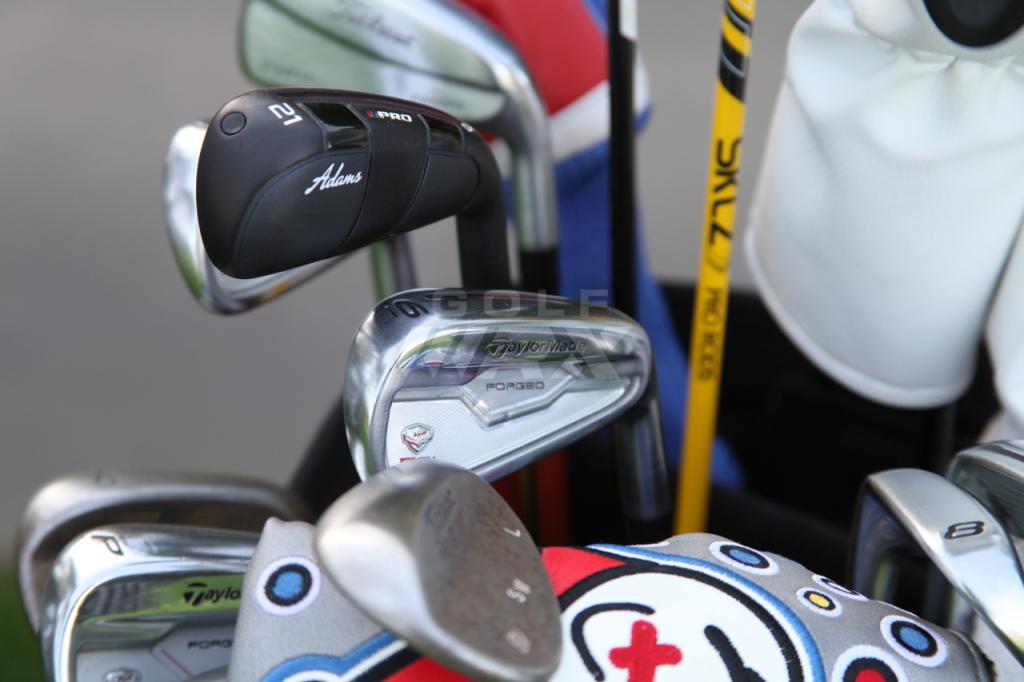
The professional club fitter knows that the set makeup part of the fitting recommendation can be one of the most effective ways to offer measurable improvement to the player, especially for the many millions of average-to-less-skilled golfers.
The reason set makeup fitting has become such a valuable path to game improvement for the average player is simply because of the industry’s move to longer-length woods and lower-lofted irons in the past 30 years.
My experiences have taught me that 3 woods with 14 degrees of loft and 43.5-inch lengths are of little to no help to most average golfers. Neither are many 3, 4 and 5 irons, because of their very low lofts. Yet how many average golfers have these clubs within their current set makeup? Most of them, because of the way so many clubs are sold to average golfers.
It used to be that golfers would buy a driver, 3 wood, 5 wood and a set of irons, 3-PW. Even a recent shift to iron sets of 4-GW still leaves the average golfer with two of the irons with too little loft that many golfers can’t hit well enough to merit carrying them in the bag.
Thus, the common sense goal of set makeup fitting will always be to replace all clubs that the golfer cannot hit consistently well with clubs that hit the ball the same distance, but are easier to hit.
The club fitter’s No. 1 key to set makeup fitting is to find out the lowest-lofted wood and the lowest-lofted iron that the golfer can hit with reasonable consistency in terms of getting the ball up in the air and to fly between the tree lines of the hole. Of these provisos, consistency in hitting the ball well up in the air is key because the fitter can always reduce slice or hook with a length and face angle change in the replacement wood and/or hybrid.
If the golfer cannot hit the 3 wood or 4 wood well up in the air at least 4 of 6 times, the club should not be in the bag. It is far better to have the first wood after the driver be a 5 wood or even 7 wood that the golfer can hit up in the air more than 90 percent of the time and give up a little distance, than to keep hoping for the right swing to be able to hit lower-lofted woods. If the golfer takes lessons and improves, then fine, lower-lofted woods can always be added later.
In terms of the irons, obviously we are talking about replacing low-lofted irons with hybrids or high-lofted fairway woods. Within this is also the matter of what lofts and lengths in the higher-lofted woods are going to deliver the same distance the golfer would have gotten if he or she were to hit the lower-lofted irons well.
Length wise, it is just so much wiser to fit hybrids with the same length as the irons being replaced because that leads to a more consistent distance gap between the lowest lofted iron and the hybrid just above it. Loft wise, it depends on the golfer’s clubhead speed.
The higher the club head speed (typically more than 80 mph with the 6 iron), the more likely it is that the replacement woods or hybrids may need to have a little more loft than the irons being replaced to offer the right distance and distance gap between the last hybrid or fairway wood and the first iron.
As to whether to go to a high-lofted wood or hybrid for the iron replacements, the club fitter consults two things:
- The more the golfer sweeps the ball rather than hits down on the ball, the more likely that high-lofted woods will be a golfer’s iron replacements.
- The golfer’s personal preference/opinion as to whether they are more comfortable or confident with a fairway wood or a hybrid is also key to the selection of the low-loft iron replacement clubs.
Club head speed also plays a role in the set makeup determination. The slower the club head speed, the shorter the distance gap from normal 4-degree loft increments between clubs. Why saddle a slower speed player with a combination of 13 woods and irons when a 4-degree loft gap offers only 6-to-7 yards of difference between each club?
For the good player, set makeup fitting certainly will include some of the same elements for the average player. Not all players who shoot in the 70s can consistently hit the a 3 wood high enough or consistently enough off the deck, nor can they hit a 3 iron (sometimes even a 4 iron) well enough to say it is better to keep it in the bag than an easier-to-hit hybrid that flies the same distance.
For many good players, set makeup fitting has to focus on several other areas:
- Let’s say you can hit your 3 and 4 irons up in the air. Can you stop those shots on the green as well as you could if you hit a higher-launching hybrid that flies the same distance?
- Does your higher club head speed or later release cause a much higher flight with your hybrids so that in high-wind conditions you have control or distance problems? If so, be smart and use hybrids on calmer days and put the lower-lofted irons back in the bag on windy days.
- Players who can get a little off line from day to day might consider replacing their 3 wood and 5 wood with a strong 2 hybrid that is in the area of 40-to-41 inches in length for more control.
- Different horses for different courses. Good players should always have an array of alternative clubs that are better suited to different courses and different hole designs.
Alternative clubs to consider in the set makeup
- A longer-length driver for more wide-open courses and a shorter-length driver for tighter layouts.
- A high-COR, slightly shorter 3 wood or shorter length “mini-driver” for tee shots on courses with more tight par 4s and par 5s.
- A 3 and 4 hybrid for courses with longer par 3s and par 4s that call for long approach shots that have to stick when they land.
- Two drivers — one with less loft, one with more loft — for up and downwind holes on courses where the wind blows frequently and with velocity.
Set makeup fitting is really a test of the golfer’s common sense and control over their ego. To play consistently well, golf shall forever be a game of percentages and good misses. Smart set makeup fitting involves using clubs that give the golfer a higher percentage of consistent shots to improve both the percentage of quality shots and good misses.
Do you think Y.E. Yang feels he is less of a golfer or cares if anyone snickers about the number of hybrids he has been known to carry? At least he didn’t when he beat Tiger Woods at the 2009 PGA Championship at Hazeltine.
As a final note, the wedges are most certainly an area in which set makeup fitting plays a significant role in the golfer’s goal to play to the best of their ability. We’ll cover that later in this series when we discuss the topic of wedge fitting.
Related
- What length should your clubs be?
- What lofts should your clubs be?
- Face angle is crucial for a proper fitting
- The best way to fit lie angle
- How to choose the right club head design
- Tom Wishon’s keys to set makeup
- Getting the right size grip, time after time
- What shaft weight should you play?
- What swing weight should your clubs be?
- What shaft flex should I use?
This story is part of a 10-part series from Tom Wishon on professional club fitting.
Opinion & Analysis
The 2 primary challenges golf equipment companies face

As the editor-in-chief of this website and an observer of the GolfWRX forums and other online golf equipment discourse for over a decade, I’m pretty well attuned to the grunts and grumbles of a significant portion of the golf equipment purchasing spectrum. And before you accuse me of lording above all in some digital ivory tower, I’d like to offer that I worked at golf courses (public and private) for years prior to picking up my pen, so I’m well-versed in the non-degenerate golf equipment consumers out there. I touched (green)grass (retail)!
Complaints about the ills of and related to the OEMs usually follow some version of: Product cycles are too short for real innovation, tour equipment isn’t the same as retail (which is largely not true, by the way), too much is invested in marketing and not enough in R&D, top staffer X hasn’t even put the new driver in play, so it’s obviously not superior to the previous generation, prices are too high, and on and on.
Without digging into the merits of any of these claims, which I believe are mostly red herrings, I’d like to bring into view of our rangefinder what I believe to be the two primary difficulties golf equipment companies face.
One: As Terry Koehler, back when he was the CEO of Ben Hogan, told me at the time of the Ft Worth irons launch, if you can’t regularly hit the golf ball in a coin-sized area in the middle of the face, there’s not a ton that iron technology can do for you. Now, this is less true now with respect to irons than when he said it, and is less and less true by degrees as the clubs get larger (utilities, fairways, hybrids, drivers), but there remains a great deal of golf equipment truth in that statement. Think about it — which is to say, in TL;DR fashion, get lessons from a qualified instructor who will teach you about the fundamentals of repeatable impact and how the golf swing works, not just offer band-aid fixes. If you can’t repeatably deliver the golf club to the golf ball in something resembling the manner it was designed for, how can you expect to be getting the most out of the club — put another way, the maximum value from your investment?
Similarly, game improvement equipment can only improve your game if you game it. In other words, get fit for the clubs you ought to be playing rather than filling the bag with the ones you wish you could hit or used to be able to hit. Of course, don’t do this if you don’t care about performance and just want to hit a forged blade while playing off an 18 handicap. That’s absolutely fine. There were plenty of members in clubs back in the day playing Hogan Apex or Mizuno MP-32 irons who had no business doing so from a ballstriking standpoint, but they enjoyed their look, feel, and complementary qualities to their Gatsby hats and cashmere sweaters. Do what brings you a measure of joy in this maddening game.
Now, the second issue. This is not a plea for non-conforming equipment; rather, it is a statement of fact. USGA/R&A limits on every facet of golf equipment are detrimental to golf equipment manufacturers. Sure, you know this, but do you think about it as it applies to almost every element of equipment? A 500cc driver would be inherently more forgiving than a 460cc, as one with a COR measurement in excess of 0.83. 50-inch shafts. Box grooves. And on and on.
Would fewer regulations be objectively bad for the game? Would this erode its soul? Fortunately, that’s beside the point of this exercise, which is merely to point out the facts. The fact, in this case, is that equipment restrictions and regulations are the slaughterbench of an abundance of innovation in the golf equipment space. Is this for the best? Well, now I’ve asked the question twice and might as well give a partial response, I guess my answer to that would be, “It depends on what type of golf you’re playing and who you’re playing it with.”
For my part, I don’t mind embarrassing myself with vintage blades and persimmons chasing after the quasi-spiritual elevation of a well-struck shot, but that’s just me. Plenty of folks don’t give a damn if their grooves are conforming. Plenty of folks think the folks in Liberty Corner ought to add a prison to the museum for such offences. And those are just a few of the considerations for the amateur game — which doesn’t get inside the gallery ropes of the pro game…
Different strokes in the game of golf, in my humble opinion.
Anyway, I believe equipment company engineers are genuinely trying to build better equipment year over year. The marketing departments are trying to find ways to make this equipment appeal to the broadest segment of the golf market possible. All of this against (1) the backdrop of — at least for now — firm product cycles. And golfers who, with their ~15 average handicap (men), for the most part, are not striping the golf ball like Tiger in his prime and seem to have less and less time year over year to practice and improve. (2) Regulations that massively restrict what they’re able to do…
That’s the landscape as I see it and the real headwinds for golf equipment companies. No doubt, there’s more I haven’t considered, but I think the previous is a better — and better faith — point of departure when formulating any serious commentary on the golf equipment world than some of the more cynical and conspiratorial takes I hear.
Agree? Disagree? Think I’m worthy of an Adam Hadwin-esque security guard tackle? Let me know in the comments.
@golfoncbs The infamous Adam Hadwin tackle ? #golf #fyp #canada #pgatour #adamhadwin ? Ghibli-style nostalgic waltz – MaSssuguMusic
Podcasts
Fore Love of Golf: Introducing a new club concept

Episode #16 brings us Cliff McKinney. Cliff is the founder of Old Charlie Golf Club, a new club, and concept, to be built in the Florida panhandle. The model is quite interesting and aims to make great, private golf more affordable. We hope you enjoy the show!
Opinion & Analysis
On Scottie Scheffler wondering ‘What’s the point of winning?’

Last week, I came across a reel from BBC Sport on Instagram featuring Scottie Scheffler speaking to the media ahead of The Open at Royal Portrush. In it, he shared that he often wonders what the point is of wanting to win tournaments so badly — especially when he knows, deep down, that it doesn’t lead to a truly fulfilling life.
View this post on Instagram
“Is it great to be able to win tournaments and to accomplish the things I have in the game of golf? Yeah, it brings tears to my eyes just to think about it because I’ve literally worked my entire life to be good at this sport,” Scheffler said. “To have that kind of sense of accomplishment, I think, is a pretty cool feeling. To get to live out your dreams is very special, but at the end of the day, I’m not out here to inspire the next generation of golfers. I’m not out here to inspire someone to be the best player in the world, because what’s the point?”
Ironically — or perhaps perfectly — he went on to win the claret jug.
That question — what’s the point of winning? — cuts straight to the heart of the human journey.
As someone who’s spent over two decades in the trenches of professional golf, and in deep study of the mental, emotional, and spiritual dimensions of the game, I see Scottie’s inner conflict as a sign of soul evolution in motion.
I came to golf late. I wasn’t a junior standout or college All-American. At 27, I left a steady corporate job to see if I could be on the PGA Tour starting as a 14-handicap, average-length hitter. Over the years, my journey has been defined less by trophies and more by the relentless effort to navigate the deeply inequitable and gated system of professional golf — an effort that ultimately turned inward and helped me evolve as both a golfer and a person.
One perspective that helped me make sense of this inner dissonance around competition and our culture’s tendency to overvalue winning is the idea of soul evolution.
The University of Virginia’s Division of Perceptual Studies has done extensive research on reincarnation, and Netflix’s Surviving Death (Episode 6) explores the topic, too. Whether you take it literally or metaphorically, the idea that we’re on a long arc of growth — from beginner to sage elder — offers a profound perspective.
If you accept the premise literally, then terms like “young soul” and “old soul” start to hold meaning. However, even if we set the word “soul” aside, it’s easy to see that different levels of life experience produce different worldviews.
Newer souls — or people in earlier stages of their development — may be curious and kind but still lack discernment or depth. There is a naivety, and they don’t yet question as deeply, tending to see things in black and white, partly because certainty feels safer than confronting the unknown.
As we gain more experience, we begin to experiment. We test limits. We chase extreme external goals — sometimes at the expense of health, relationships, or inner peace — still operating from hunger, ambition, and the fragility of the ego.
It’s a necessary stage, but often a turbulent and unfulfilling one.
David Duval fell off the map after reaching World No. 1. Bubba Watson had his own “Is this it?” moment with his caddie, Ted Scott, after winning the Masters.
In Aaron Rodgers: Enigma, reflecting on his 2011 Super Bowl win, Rodgers said:
“Now I’ve accomplished the only thing that I really, really wanted to do in my life. Now what? I was like, ‘Did I aim at the wrong thing? Did I spend too much time thinking about stuff that ultimately doesn’t give you true happiness?’”
Jim Carrey once said, “I think everybody should get rich and famous and do everything they ever dreamed of so they can see that it’s not the answer.”
Eventually, though, something shifts.
We begin to see in shades of gray. Winning, dominating, accumulating—these pursuits lose their shine. The rewards feel more fleeting. Living in a constant state of fight-or-flight makes us feel alive, yes, but not happy and joyful.
Compassion begins to replace ambition. Love, presence, and gratitude become more fulfilling than status, profits, or trophies. We crave balance over burnout. Collaboration over competition. Meaning over metrics.
Interestingly, if we zoom out, we can apply this same model to nations and cultures. Countries, like people, have a collective “soul stage” made up of the individuals within them.
Take the United States, for example. I’d place it as a mid-level soul: highly competitive and deeply driven, but still learning emotional maturity. Still uncomfortable with nuance. Still believing that more is always better. Despite its global wins, the U.S. currently ranks just 23rd in happiness (as of 2025). You might liken it to a gifted teenager—bold, eager, and ambitious, but angsty and still figuring out how to live well and in balance. As much as a parent wants to protect their child, sometimes the child has to make their own mistakes to truly grow.
So when Scottie Scheffler wonders what the point of winning is, I don’t see someone losing strength.
I see someone evolving.
He’s beginning to look beyond the leaderboard. Beyond metrics of success that carry a lower vibration. And yet, in a poetic twist, Scheffler did go on to win The Open. But that only reinforces the point: even at the pinnacle, the question remains. And if more of us in the golf and sports world — and in U.S. culture at large — started asking similar questions, we might discover that the more meaningful trophy isn’t about accumulating or beating others at all costs.
It’s about awakening and evolving to something more than winning could ever promise.




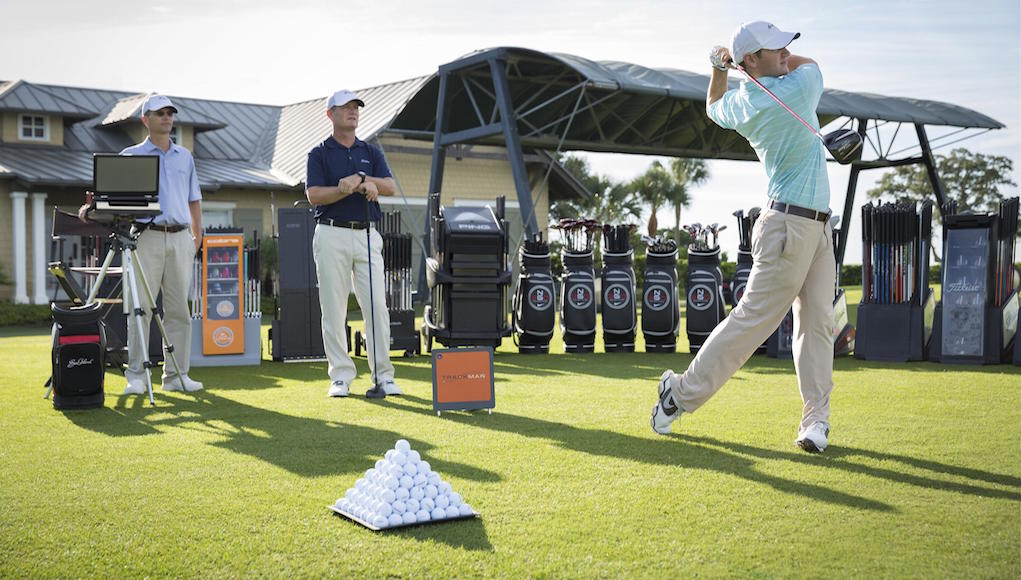
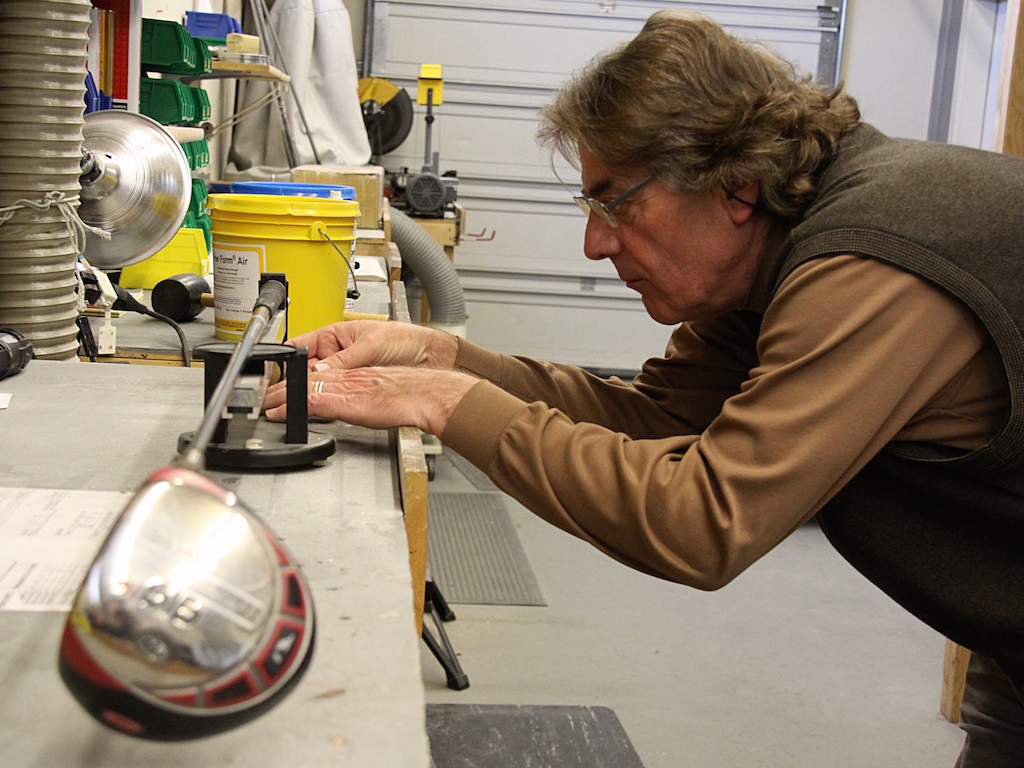
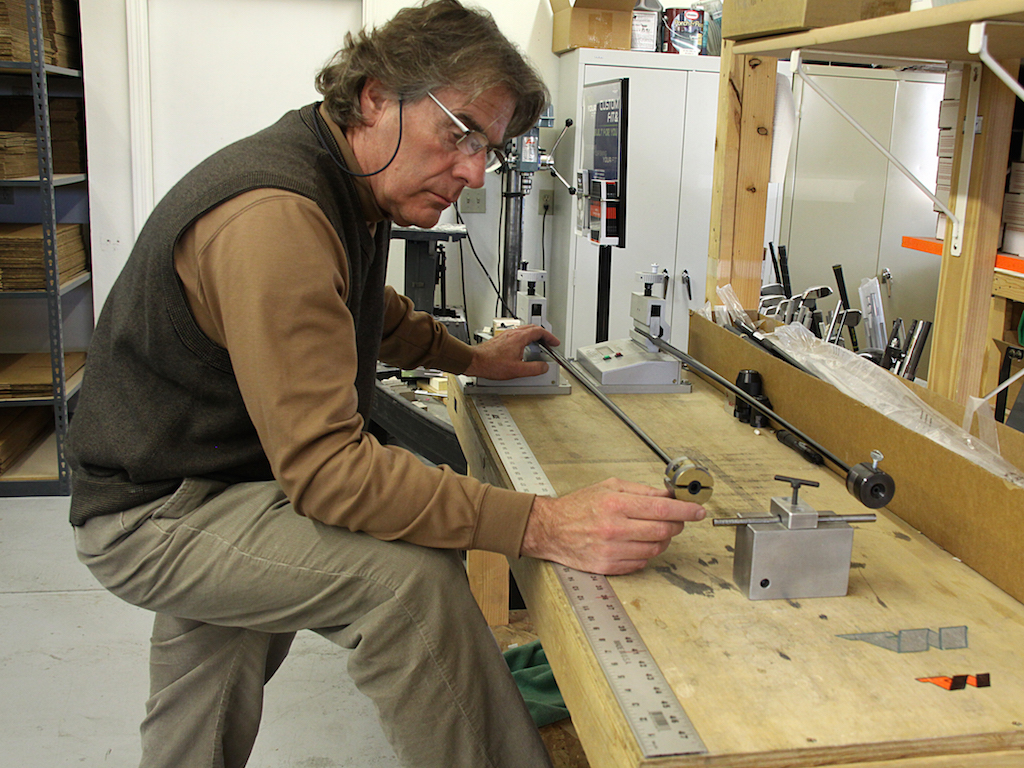
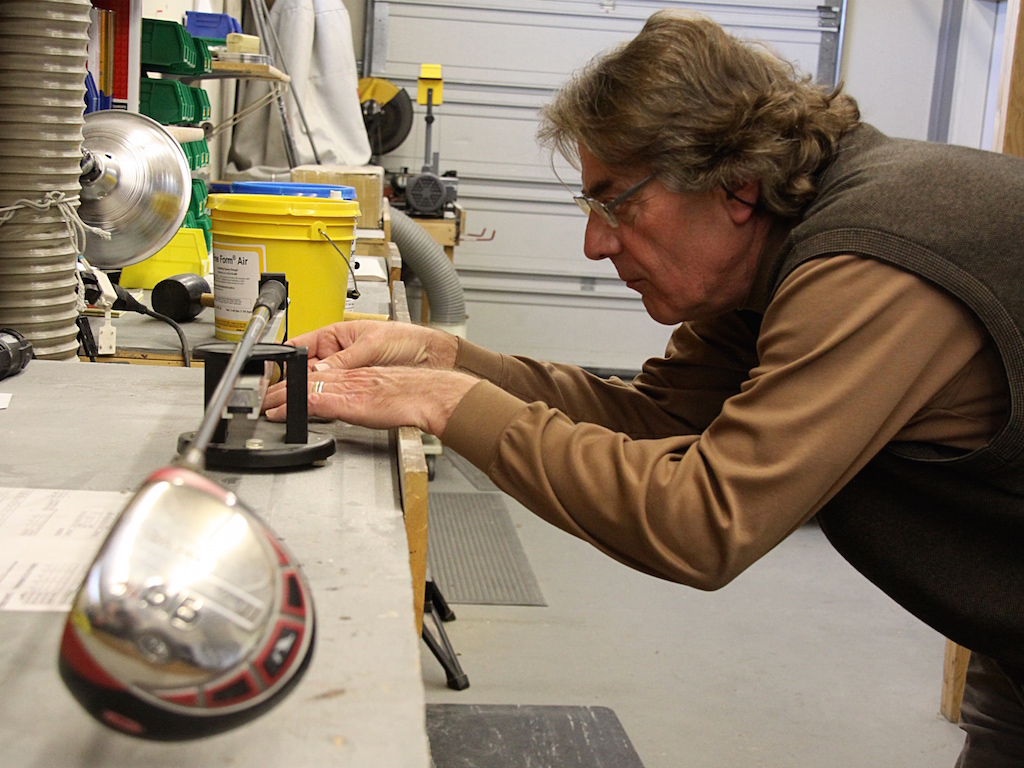
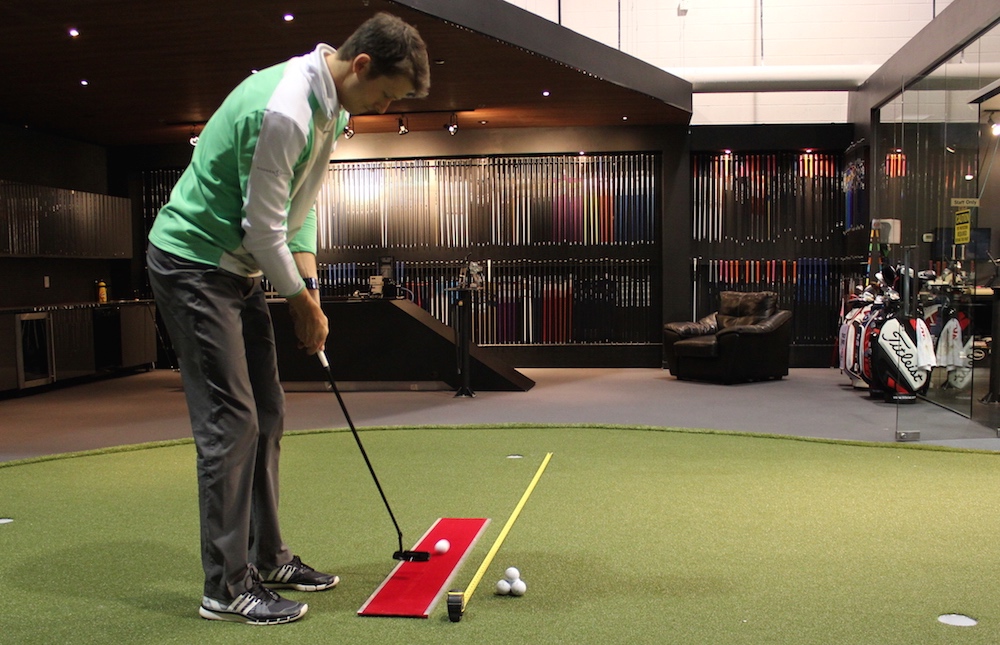
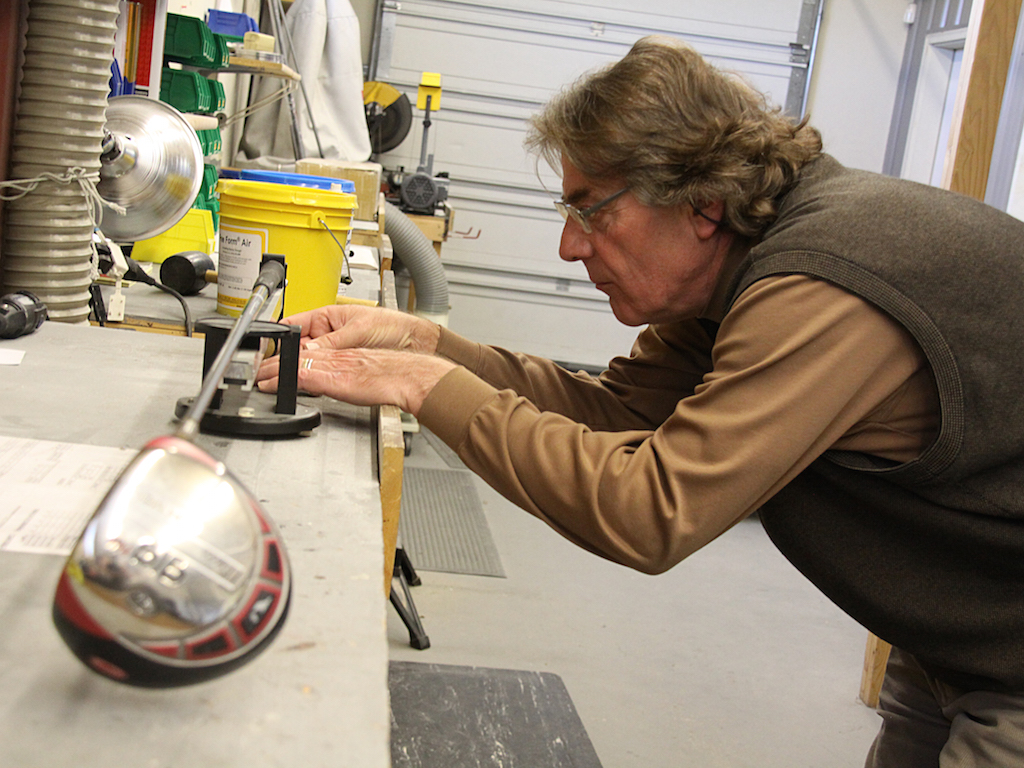








Gerry Teigrob
Apr 11, 2016 at 2:51 am
Tom, I know that we both agree about the importance of a customized set makeup. Just curious how many amateur golfers just get “custom fitted’ at a golf warehouse center such as Golf Town…I have been working with GolfTec and have seen better success there due to a more accurate testing and fitting based on the key dynamics you suggest
That be part of an actual club fitting. I am happy that I got properly fitted, and I have my GolfTec coach, Clinton, to thank! I would suggest that not getting properly fit means you might as well give your golf buddies their money at the first tee!
Gerry Teigrob
Apr 10, 2016 at 5:56 pm
Hi Tom. Just curious how many amateur golfers think that just playing clubs off the rack and getting “fitted” at a golf superstore like Golfsmith or Golf Town is an Ctual fitting? I think that is akin to giving your amateur opponents extra strokes. I have been fortunate to get fitted with my full set of Redline irons and matching hybrids. I am still working with GolfTec to refine things further. I find GolfTec has it right…they understand what it means to be fitted properly and they eliminate the typical bloated shots that I would typically see at GolfTec Town. I highly recommend a complete clubfitting! I appreciate my coach Clinton at GolfTec and I am sure that will definitely put me on the road to golfing success in the summer ahead!
Gerry Teigrob
Apr 10, 2016 at 4:41 pm
Hello Tom. Just curious about set makeup…how poorly do mos
tlmck
Feb 17, 2015 at 2:28 am
I carry a 10.5 degree driver, a 17 degree hybrid, and a 22 degree 4 iron thru SW in 4 degree increments. With my putter, that is 12 clubs which is all I need. I do not swing as fast anymore, but I am still a good ball striker so I can fill in gaps as needed with different types of shots.
jj
Feb 12, 2015 at 1:51 am
Anyone hit the new Grafalloy red for 2015?. I think the specs are the same but different graphics? Just wondering,,,,, love the shaft. Thanks
MT
Feb 11, 2015 at 6:44 pm
Hi Tom,
I have seen your comment on the web that MB irons has no real advantage to CB. Regardless of them having smaller smash factor my observations measured by Trackman are that MB irons are much faster than CB (the bigger CB the faster MB against that – up to 5 mph club speed with the exact same shaft). Can you please give your thoughts on that.
thanks,
Mark
Tom Wishon
Feb 12, 2015 at 10:46 am
MArk:
There is absolutely no scientific basis for an MB iron head design to be able on its own to offer a higher clubhead speed over a CB or any other iron model type. Any slight size difference with the MB being smaller is just not even close to being able to do this. It just can;t happen from the design itself.
When a golfer picks up a different club and automatically achieves a higher clubhead speed, the reasons for this from all of my research into this over the years point toward something in the combination of the length + shaft weight + total weight + headweight + balance point of the club being much better matched to the golfer’s swing timing, tempo, rhythm, sense of feel. Such that with the club the golfer then achieves a much more free, unrestricted timing and rhythm and release of the club that leads to the higher speed. With better players, any of these spec differences do not have to be huge to combine to have this effect. but the only way this can be known for sure would be to have both irons to measure every single one of these specs to then compare them individually to see what’s different.
But I can assure you there is nothing about any aspect of a MB head design vs a CB head design that could be the cause in and of itself of the increase in clubhead speed.
Jeff
Feb 13, 2015 at 6:22 am
Thanks for the article. Sadly by following your advice my bag would have a 5 wood and a 3 iron as my options for driver lol. I can hit my driver all day on the range as soon as I get to the tee box to the trees it goes. How does one improve their over all game If one of the more important clubs in the bag cant ever be used.. I can crush my 3 iron consistently off the tee but that really expensive driver I own really needs some use!
Tom Wishon
Feb 13, 2015 at 12:42 pm
JEFF
The first key in trying to get the driver to be more of a help than a hindrance for golfers who truly struggle with the club is to start all over from scratch with a much more “radical” change to the driver than you have ever tried before. First you want to have the driver not be more than 43″ in length. Then to experiment with the headweight using lead tape to add a little, hit shots, add a little, hit shots and look for when you start to notice that you truly can FEEL the presence of the head during the swing, but yet it is not feeling like it is so heavy that you have to make more of a physical effort to swing the club through to impact. Also to be sure the loft on the driver is higher than normal, such as at least 15* of loft. With such a driver, you have a tee shot club that would be much closer to the specs of the 5 wood that you can hit OK. And with the higher driver loft still being lower than the loft on the 5w, and with the 43″ length being probably only around an inch longer than the 5w, you would have a length that is closer to a length you know you can control, but yet has a little bit more length to possibly combine with the loft to get you more distance off the tee than you get when you use the 5w off the tee.
Obviously the best way to get a driver like this is going to be to work with a custom clubmaker who could build such a driver from scratch for you. Hope this helps.
MT
Feb 13, 2015 at 2:16 pm
Thanks Tom. I tested (as I own all of them) the clubs MB, CB and bigger CB on same shafts with same specs such as swing weight etc – all made by the same clubfitter. In fact the feel can be a major contributor to higher speed but I thought it might be something towards transition/release. The same speed difference was experienced by others in front of me. And we are not
MB fanboys trying to find support
for using them. In
fact all of them play some
sort of CB irons.
bwoody01
Feb 11, 2015 at 1:44 pm
Interesting read. I might look for an adjustable 3/4 hybrid now, to change out the 4 iron occasionally. I could see where the explanations might benefit.
Even though I can hit my 4 iron (20.5 degrees) higher when needed, as well as my 2 hybrid (setup at 17.25), I tend to flight the ball lower (on purpose). I live in Texas. We have seasonal strong winds at times here and a high ballooning/ spinning shot is bad news when the wind is up.
‘Texas based players’ tend to have lower launching setups for wind purposes specifically.
I played with Wes Short Jr a couple times and all his launching apexes were very low, regardless of the club he used. It looked like they never got above 25-35 feet for this very purpose. I also watched Angel Cabrera once hitting 4 irons, full swing, on the range at Redstone Golf Club and they never got above 25 feet I bet. They were “in the air” for sure and going at rocket ship speeds. So, maybe factors of where you ‘play your golf’ also come into play.
Some of us don’t have endorsement deals and tour vans following us around to tweak shafts, club heads, lofts, lie angels on the fly, so, I don’t think I am going to do much for my setup on my next round. I know for a fact that the tour pros tweak things during an event and week to week – depending on course set up and weather forecasts. I would guess most of us don’t have this luxury…
No mention of putters here!? I have been informed to use lighter weighted putters for faster less grainier greens and conversely for slower grainier greens. Thoughts?
cdvilla
Feb 11, 2015 at 11:57 am
Plus it’s always fun to go buy gear… 🙂
cody
Feb 11, 2015 at 11:54 am
While i appreciate your insight as a club designer and fitter. This smacks to me a someone pitching that more clubs, to the extent of three drivers, a few fairway woods, a hybrid or three, and an extra wedge if you can fit it in is the way to better golf. Sounds like I need about three sets of clubs to play a single round.
Teaj
Feb 11, 2015 at 1:01 pm
I swap out a 2 iron utility and 3 hybrid depending on the course and conditions ie wind that day so I get his point of having more clubs. if you cannot afford more clubs figure out what best suites your game and the conditions that you play in.
JR
Feb 11, 2015 at 2:18 pm
Smart golfers always have different clubs available for different playing conditions.
Sounds like can learn something from them.
cody
Feb 24, 2015 at 4:56 pm
I didnt say an extra club our two is a bad idea. i just said, based off this article that it sounds like Mister Wishon is proposing a lot more than an extra club.
Gerry Teigrob
Apr 13, 2016 at 8:25 pm
By swapping clubs, Cody, you can in fact change your set makeup without buying a lot of extra clubs. I know some amateur players who are in the Golf Industry and have as many as 7 or 8 sets but they are donated to them by golf manufacturers. Most of us are fortunate to have two sets, leave alone one! I prefer two sets to prepare for as my game improves. Few actually have that luxury. I can see where Tom’s coming from!
Dave
Feb 11, 2015 at 11:38 am
Tom-
Thanks for all of this detailed insight so far! As a teaching professional I constantly straddle a line between what I can teach a student to do, and what changes I can make in their equipment to better suit their game. I’ll admit that I have probably “unsold” many a new set of clubs to students who were certain that new technology was their golden ticket to breaking their personal bests. All too often when comparing a set of clubs to their own, we just didn’t see enough difference to justify the (high) cost. I will however say, that properly gap fitting a player hasn’t been something I do often enough.
I am curious about your statement of finding the longest controllable club. How would you feel about fitting a high handicapper with only those clubs that they can hit consistently (relatively speaking) 75% of the time. How would someone’s scores change if say the longest club they ever hit off the ground were a 6 iron? Never giving them the option to even attempt a 3-hybrid off the grass until they can prove their skill.
I would also like to know solely based on clubhead speeds, is there a minimum loft iron you stop at when fitting?
Thank you for all this great info on proper fitting! Will this be available as a compiled write-up when you are finished or will I need to get copying and pasting?
-Dave
Tom Wishon
Feb 11, 2015 at 2:19 pm
DAVE:
it happens quite frequently with good clubfitters that a golfer who can’t hit a 3, 4, 5 iron can hit a hybrid or fwy wood of the same loft with a higher level of consistency than the iron. The main reason is because fwy woods and hybrids usually have a LOWER center of gravity than the iron and ALWAYS have a much more rear located CG than the iron. Couple that with lengths that are not more than 1″ longer than the irons being replaced and the avg to less skilled golfer has clubs for these lower lofts that they can hit with more consistency than the irons. Not 100% consistent but typically 30-50% MORE consistent than the iron because of these factors.
I’m now making more of an effort to always design a 9w with any set of fwy woods and am thinking of taking that into an 11w as well because you can take a 7w, 9w and 11w and build them shorter than what they normally would be as a fwy wood to be either the same length or 1/2″ to 1″ longer than the iron of the same loft and you do end up with clubs at lofts of 21, 24/25, 27/28 that are most definitely easier to hit than irons of the same loft.
Hybrid wise since there are hybrids out there up through a 6 iron loft, if you fit the golfer with the hybrids of the same loft AT THE SAME LENGTH as the irons he’s struggling to hit consistently, this too can be a very effective way to get clubs into the bag that the golfer can hit more consistently than the irons of those same lengths.
As a designer, I am very much against the std lengths that so many companies build their hybrids to have which are anywhere from 1″ to 2″ or more than the irons of the same loft. When this is done, it creates a distance gap that is too great between the first iron and the last hybrid and it also can duplicate the distance of fwy woods the golfer may have. Longer length is such a killer for avg to less skilled players. By going shorter with the iron replacement clubs, whether they be fwy woods or hybrids, you then complement the lower and more rear located CG of the wood/hybrid with lengths that help offer greater on center hit consistency. And distances then fall into sequence up from the irons much better too.
Fitting is and shall always be more a matter of increasing percentages of improvement, not completely eliminating poor shots. Get a golfer 10 more yards with the driver, reduce his slice by 30%, get him 2-3 more fwys hit per round, 2-3 more greens hit, 3-4 more 2nd shots that get closer to the green than before, and it all adds up a little here and a little there to result in real game and score improvement. Proper fitting will virtually never turn a 22 into an 8, an 18 into a 6, or a 13 into a 5, but it can turn the 22 into a 13-14 or the 18 into a 12-13 or the 13 into a 9, and those levels of improvement most definitely are tangible and will make the golfer enjoy the game more.
Josh
Feb 11, 2015 at 9:19 pm
How should I attempt to have my hybrids (21 and 18*) cut down to be more iron length? From butt end…tip end…combo? Or should have it taken to a club fitter to determine the shafts characteristics? Looking for a cheaper way to get this done.
J.R.
Feb 11, 2015 at 11:09 pm
@Josh:
You generally take the grip off and cut from the butt end, not the tip end.
Then re-grip the club.
That’s the least expensive way to get this done, and it is done very easily as well. Many folks do it themselves if they are DIY’ers, but your local golf shop could do it reasonably cheaply if you aren’t so inclined.
Trimming from the butt causes negligible change in shaft flex characteristics.
As a rule of thumb, I read in a Ralph Maltby article (Golfworks component company founder) that trimming the tip 1/2″ would have the same frequency effect as trimming the butt end a full two inches. In other words, trimming from the tip has four times greater effect on shaft frequency than trimming from the butt end does. Trimming the tip a half inch would usually change most shafts only about a quarter of a flex stiffer, which most golfers wouldn’t even notice.
Thus, you could take two inches off the butt end and still have barely any change in shaft frequency/stiffness. It will, however, make the club swingweight change to a lighter feel, so you may want to add some lead tape to back of the clubhead if you later find that it feels too light. You may not even notice a difference. More experienced golfers generally would, while casual golfers may not.
If even needed, the tape can be purchased at a local golf shop. Then just experiment a bit with strips of tape until you get the feel that you like.
Hope this helps answer your question about your 18* and 21* hybrids.